"PROJECT GUITAR"
*any guitar modifications, refinishing, upgrades, tips and troubleshooting
*reviews on guitars, guitar effects, amps sharing through personal experience
*setup setup setup! tips and all
*pedals galore
helpful information on creating your own gear thanks to the istoryans who contributed thumbs up ninyo mga bro:mrgreen:
Guitar mods and guitar works
http://www.projectguitar.com/
pedal reviews all brands
http://reviews.harmony-central.com/reviews/Effects
for those who want to build their own pedal boards, check this
http://www.instructables.com/id/E1EK0G17BYEP286IGI
And for those who want to build their own stomp boxes.
http://www.tonepad.com/projects.asp?projectType=fx
Guitar Amp Tone, Effects Placement, and
Cranked-Amp Tone at Any Volume
http://www.amptone.com/#postampfx
effects orojects
http://www.tonepad.com/projects.asp?projectType=fx
pedal board combo and setup BOSS
http://media.bossus.com/interactive/vpb.html
Dunlop GCB-95 CryBaby Mods
http://www.diyguitarist.com/DIYStompboxes/WahMod.htm
Hello guys pickup guide (thanks to bryanarzaga)
Basically, a pickup is a magnet with lots of copper wire tightly wrapped around it. When the string is hit and vibrates in front of magnet, it disturbs the magnetic field of the magnet, which causes an alternating voltage in the copper wire. That voltage is sent out as a signal to your amp. Each pickup has certain properties that make up it's sound, some of those being:
-Tone
-Output
-Construction
Tone- Basically how much high, mid, and low the pickup sends out in it's signal. The pickup will sense a certain amount of each in every note you play, and pump them out at certain levels. Pickups that have lots of highs and less bass are considered "bright". If placed in the right guitar, it can create screaming sound on high notes and pinch harmonics, a glassy sound in the neck, and snappy twang without distortion. Pickups that are mid-heavy or bassy will usually have more punch, grind and growl. Mid-heavy pickups can also have more cut and presence than others, and higher notes sound "fatter". Bassy pickups can sound huge and punch hard with excellent response to palm mutes and low notes. Pickups that have scooped mids (more treble and bass and less mids) can have powerful low notes and excellent clean highs for soloing, but may not cut through the rest of the band on solos. They can also have great sustain and excellent harmonics.
Output- This describes the strength of the signal leaving the guitar, and is best measured in millivolts (mV). DiMarzio classifies output in three categories; Vintage (<270mV), Medium (270 to 324mv), and High (325mV+). Vintage/low output pickups are usually extremely clear even under high gain, and will often have open, singing highs. Medium power pickups will still have cleaner single notes, but may have added power for strong rhythm and a beefier bass response. High output pickups can drive amps (especially tube amps) into overdrive/distortion and can be super sensitive to harmonics (including pinch harmonics). However, the clarity of signal notes can suffer, especially with super fast solos and high gain as notes can blend into each other.
Manufacturers can determine the amount of output a pickup has by altering two basic things:
1) The strength of the magnet. A stronger magnets creates a stronger magnetic field, and when that field is disrupted by the vibrating guitar string, a greater amount of flux is produced, generating a stronger signal. An unfortunate side effect of the stronger magnetic field is string pull. Extremely strong magnets can actually attract the strings and kill their vibrations, killing the sustain of the pickup.
2) The amount of turns of copper wire or the type of wire. Increasing the amount of copper or increasing its size will increase the resistance (impedance) and the inductance of the pickup, resulting in a higher output . A result of increasing impedance is the attenuation (loss) of highs in the signal. "Overwound" pickups are usually very bass and mid heavy and lack highs.
Pickup makers will experiment with these two factors (along with others) to change and create the sound of a pickup. For example, manufacturers will often use higher output ceramic magnets to retain some of the highs of their higher output pickups since the increased magnet strength will allow them to use less copper wiring, attenuating less of the highs.
One common misconception about pickups is that magnet have a direct effect on your tone. This is not true!!! The "Alnico magnets are warm, Ceramic magnets are harsh" theory is madness!! The role a magnet plays in the pickup is to create the magnetic field. The strength of the magnetic field determines the pickups OUTPUT, and different magnets can have different strengths. Tone is determined by the diameter and amount of copper wire, which creates the amount of inductance on the pickup. Remember, the higher the inductance and impedance, the less highs are put out. Magnets can have a small impact on some of the characteristics of the notes you play. For example, ceramic magnets have a higher output, which will generally create more punch and a sharper attack. Alnico magnets (depending on the type, there areare usually weaker and have a softer, smoother attack, and may have a "spongy" feel. However, this has no effect on the amount of lows, mids, and highs sent out by the pickup, which is defined as tone. There are warm ceramic pickups and harsh alnico pickups out there.
Construction- Over the years, the fundamental design of pickups have been modified significantly, and there are many different types of pickups to choose from today.
Single Coil- The first pickup ever created (in the mid-20's!) A single coil pickup consists of just one magnet wrapped with copper wire and is easily identified on Fender Stratocasters and very old Gibsons as the P-90 pickup (or the 1935 bar pickup). Vintage style, Fender-type single coils are usually very clear and tend to lean towards the brighter side of the tone spectrum. P-90's can have a darker, mid-range sound. Unfortunately, single coils can also pick up 50 and 60 Hz fields given off by AC electromagnetic fields of other equipment and electronics. This causes an extremely annoying, fly-like buzz or hum that can get particularly nasty at high volumes. But modern day innovations have done well to overcome this.
Humbucker- As an initial attempt to combat the horrid 60-cycle hum of single coils, the humbucker was created (buck the hum! get it?!). It basically consists of two single coils placed next side by side with opposing coils and polarity and wired in series. When the magnetic field of the magnetic fields of each coil are disrupted, the signal is induced in opposite directions since the coils have opposing polarity and coils. When the two coils' signal is combined, the noise cancels itself out while the actual signal is doubled. In reality, there will also be a small amount of hum since no two coils are constructed exactly the same. Since there are double the coils in this pickup, the amount of impudence and output can be doubled as well, creating high-ouput, bass and mid-heavy pickups. However, manufacturers can change tone by using different magnets and wire.
Rail Humbucker- Created to fit in a single coil route, the rail humbucker has copper wound around two thin blades, creating a a mini humbucker.
Coil-tap Humbucker- For flexibility in sound, many humbuckers have a coiling tapping actually that serves to recreate the sound of a single coil. The option doesn't actually cut off one coil, but reduces the output as to simulate it. This feature is usually controlled by either a push/pull pot or a small switch
Active Pickups- An active pickup is basically an extremely low impedence pickup boosted by an active preamp, EQ, or filter. All of this circuity requires a power source (9 volt battery), specialized hardware (low impedance potentiometers, switches) and results in higher costs. EMG uses a preamp to boost certain frequencies in their pickups (the 81 has boosted highs, the 85 has boosted bass and mids). Jackson experimented significantly during the mid and late 80's with active electronics. The JE series electronics include the JE-1200 which features an active mid boost, the JE-1500 with a parametric variable frequency mid boost, and the JE-1000, which could boost any of three preset frequencies with the flip of three dip switches with the boost controlled by a trim pot. The benefits of active pickups are large output for driving amps and long cable leads, a greatly defined tone, and a huge reduction in buzz and noise thanks to the preamp. The highs are usually extremely clear, and the attack is very strong. Unfortunately, all of the sound-shaping effects can leave the sound a little "sterile". Seymour Duncan has released their own line of active pickups called the "Livewire Series", the most popular being the Blackout set for neck and bridge. Seymour Duncan claims to have produced a more natural sound while reducing even more noise by using "balanced inputs" rather than "unbalanced inputs in a differential preamp" like other manufacturers.
Standard and F-Spacing: Aftermarket humbuckers are sold in two sizes, Standard and F-Spaced (or Trembucker by Seymour Duncan). Fenders have a wider string spacing than Gibsons, so when luthiers started putting Gibson built humbuckers in Strat-style guitars, they noticed that the wider spaced strings were not lining up with narrowly placed pole pieces of the pickups. As a result, the pole pieces would have difficulty sensing some strings, which could create an imbalance of output among the strings. As a result, pickup manufacturers started making humbuckers for Fender and Floyd Rose spacing (both are the same), and called them "F-Spaced" pickups. The Gibson spacing became "Standard" spacing. For 43 mm nut widths and wider, an F-spaced humbucker is also recommended in the neck. Most guitars with Floyd-type trems have a 43 mm nut width.
In the image above, you can see how the spacing on a Fender style bridge (same spacing as a Floyd Rose) does not line up directly with the Standard spaced humbucker. It is a good idea to get F-spaced pickups for your F-spaced guitar, but not having them won't completely ruin you sound. Many guitarists who first put Gibson humbuckers in their custom Super-Strats, like Eddie Van Halen, got great results. Only in extreme cases, such as your E strings resting completely outside of the pole pieces, will your string balance suffer noticeably. Pickups that have blade/bar type magnets (such as Rail humbuckers and many high output humbucker models) do not have poles which need to be aligned, therefore string spacing is a non-issue.
wood guide
As with pickups, there are many features of your guitar that can impact your sound:
-Wood type(s)
-Construction
-Bridge
Wood type- Not all wood is the same, and neither are the sounds produced by them. And since guitars are made of different wood, not all guitars will sound the same. Listed below are the most common types of tone woods used for body's, necks, and fretboards and a brief description for their tonal characteristics.
Bodies:
Alder- A light, soft wood with harder rings spread throughout it. Alder is a very balanced wood with equal amounts of lows, mids, and highs.
Basswood- A very soft wood consisting of closed grains. Lows do not resonate that well and highs are softened, but there is increased presence and cut. Basswood has a smaller tonal range (mostly mids and highs, some bass), which gives the perception that it is warmer.
Mahogany- A very stiff, hard, and heavy wood. It is consistent unlike Alder, and lacks some mids, but can handle a huge amount of lows and adds depths to high notes.
Ash- Hard Ash is heavy and dense and produces bright tone and long sustain. Swamp Ash, on the other hand, is similar to Alder with harder rings between softer sections, and has more lows and mids. However, quality among swamp ash can be inconsistent.
Necks:
Maple- A very hard stable wood with a more uniform, consistent graining allowing the vibrations to transfer to the body wood well.
Mahogany- Absorbs more vibrations and is more responsive, but compresses attack and highs
Neck Stripes (adds a very small effect):
Wenge Stripe- Dampens some of the highs and adds mids and low-mids
Bubinga Stripe- Adds a thick mid-range and lows and sustain.
Fretboards:
Rosewood- Has excellent sustain and softens highs a little, has a strong fundamental
Maple- Very bright and encourages overtones while filtering a bit of bass and changes in pick attack.
Ebony- Very dense like maple, but is extremely snappy and percussive with good sustain.
Construction- How the neck meets the body, the shape, and the thickness of the guitar can all have an effect on the sound of the guitar.
Neck-Through Bodies: A neck-thru body Is created from three pieces: the neck plank and two wings made of tone wood. A neck plank consists of the neck and the center of the body all made of one piece or the same pieces. The pickup, bridge, and back cavity are all routed into this wood. Two body wings are glued onto the plank to form the rest of the body. Since the material of the neck (usually maple) actually extends into the body and bridge area, it will have a larger impact on tone than normal, and sustain is increased as the vibrations can travel through the guitar as a whole. Maple will brighten the sound, so some manufacturers usually use basswood or mahogany wings to dampen it out.
Set-In Neck: Instead of going all the way through the body, a set-in neck slides partially into the body and is glued in place. The neck still has a smooth, small heel like a neck-thru, but is less expensive to produce and the neck material has less of an impact on tone. There is a small loss of sustain compared to neck-thru guitars
Bolt-On Neck: Bolt-on construction is, by far, the most common construction method. It is the least costly, and if the neck is damaged, or the owner desires, the neck can easily be switched out and replaced without having to remove paint and completely disassemble the guitar. This type of construction has less sustain than both set-in and neck-thru
Thickness and Shape: The more wood there is in a guitar, the more effect that wood has on the tone. For example, a big, thick mahogany Les Paul will have more lows than a thin mahogany Ibanez S, but both have more lows than a Hard Ash Telecaster, which is extremely bright and twangy. A large Alder Jackson Kelly will have more lows than that Telecaster, but still not as much as the S. There are claims that certain body shapes and headstocks will increase sustain. Dean Zalinsky of Dean Guitars says that he designed the V headstock to improve sustain in the neck and body, but there is no tangible proof to back up his claim.
Bridge: Since the strings go directly through or over the bridge of a guitar, it will have a pretty substantial impact on factors such as sustain and tone. Floyd rose type tremolos maintain contact to the body through the posts. Many claim that these two metal objects can cause a tinny sound and loss of tone, and since there is less contact with actual wood, sustain is lost as well. With string-thru bridges, the string actually passes through the body of the guitar, helping it to reverberate throughout and increase sustain.
POTENTIOMETER CHART
ang kalagmitan dri B-volume A-tone,
CLICK THIS LINK POTENTIOMETER
POTENTIOMETER
Parts No. Description Unit
3VR1C500AS 500K-AS POT W/SWITCH PC
3VR1C500B 500K-B POT FOR VOLUME & TONE PC
3VR1C500D 500K-D POT FOR TONE PC
3VR1CT500B POTENTIOMETER 500K B CURVE PC
3VR1CT500D POTENTIOMETER 500K D CURVE PC
3VR1H500A 500K-A POT for TONE PC
3VR1H500B 500K-B POT for VOLUME PC
3VR1J500AS POTENTIOMETER (500Kohm-A) PC
3VR1J500C POTENTIOMETER (500Kohm-C) FOR TONE PC
3VR1J500D POTENTIOMETER (500Kohm-D) FOR TONE PC
3VR1J500G POTENTIOMETER (500Kohm-G) FOR VOLUME PC
3VR1P500B POTENTIOMETER 500K B CURVE FOR VOLUME PC
3VR1P500BN POTENTIOMETER 500K B CURVE FOR VOLUME (SOLID SHAFT) PC
3VR1P500D POTENTIOMETER 500K D CURVE FOR TONE PC
3VR1P500DN POTENTIOMETER 500K D CURVE FOR TONE (SOLID SHAFT) PC
3VR1S500A POTENTIOMETER 500K A CURVE FOR TONE PC
3VR1S500B POTENTIOMETER 500K B CURVE FOR VOLUME PC
3VR1W500A 500K-A POT. FOR TONE PC
3VR1W500B 500K-B POT FOR VOLUME PC
3VR1Y500A POTENTIOMETER 500K A CURVE FOR TONE PC
3VR1Y500B POTENTIOMETER 500K B CURVE FOR VOLUME PC
CAPACITOR
Parts No. Description Unit
3CP1J223 CAPACITOR 0.022uF DZ
3CP1J331 CAPACITOR 330pF DZ
Results 1 to 10 of 5482
-
02-08-2008, 11:10 PM #1
 "PROJECT GUITAR 101" guitar enthusiasts, collectors, mods and reviews
"PROJECT GUITAR 101" guitar enthusiasts, collectors, mods and reviews
Last edited by stabwounds; 09-13-2008 at 12:15 AM. Reason: reference on body modifications and repainting
-
02-08-2008, 11:53 PM #2
-
02-09-2008, 01:08 AM #3
 Re: "PROJECT GUITAR"
Re: "PROJECT GUITAR"
@bawit salamat

naa ko explorer nga gi repaint sad sa una that was way back 1997 puti to sha gamit to nako during artisdais era gave the guitar to a friend kay himuon kuno niya bass? hope its still ok
hope its still ok 
heres my project:
before:cracks na sa polyurethane paint sa neck part pay chipped paint dahil ilang beses na rin bumagsak
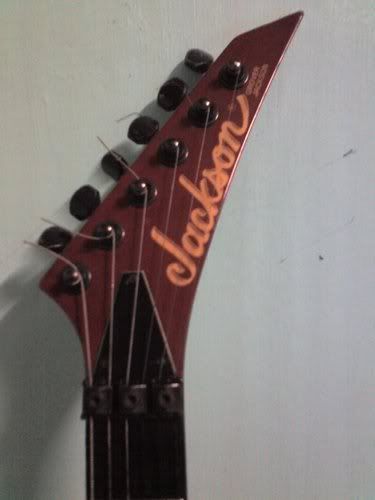
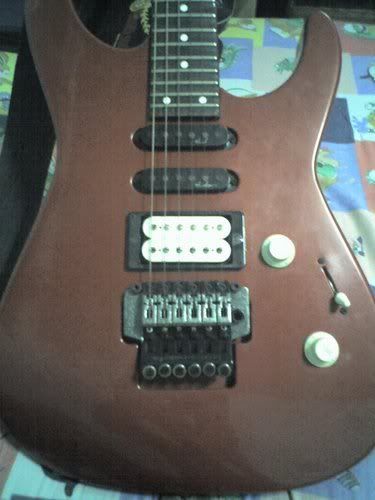
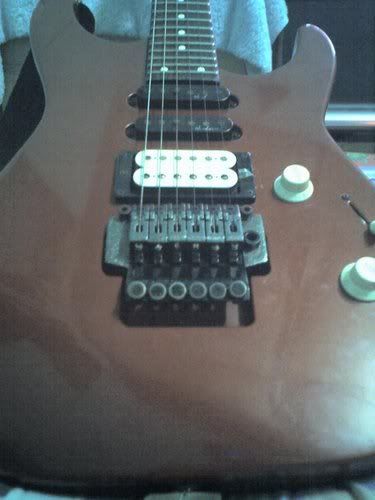
during customization: liha punas epoxy sealers liha ulit spray ng madami liha spray ulit sabit ilang araw...
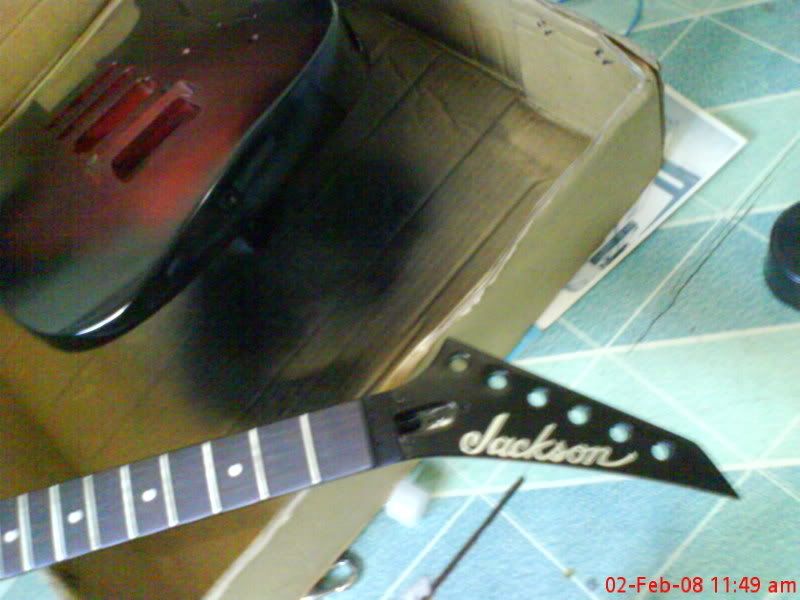
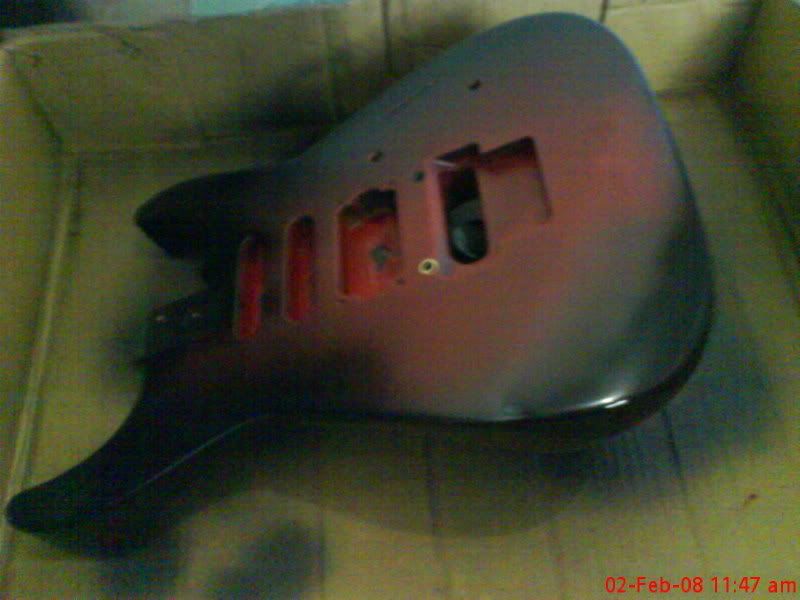
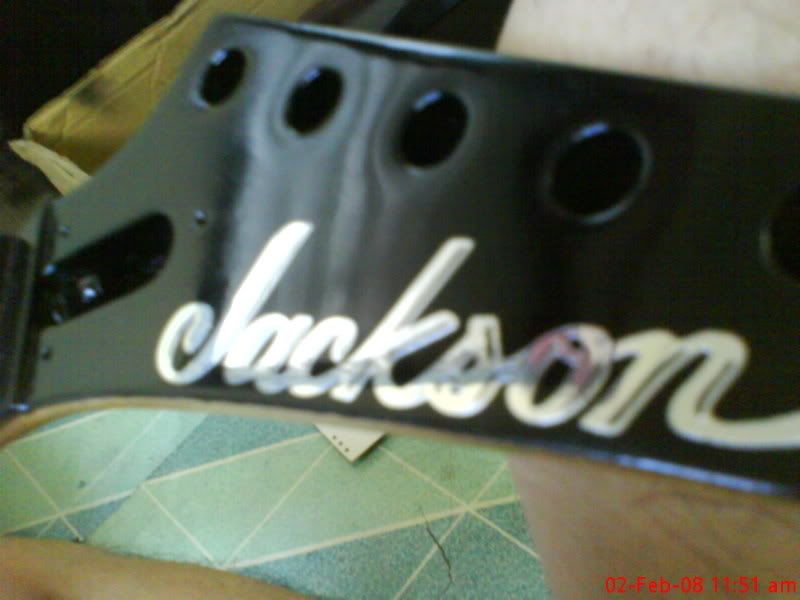
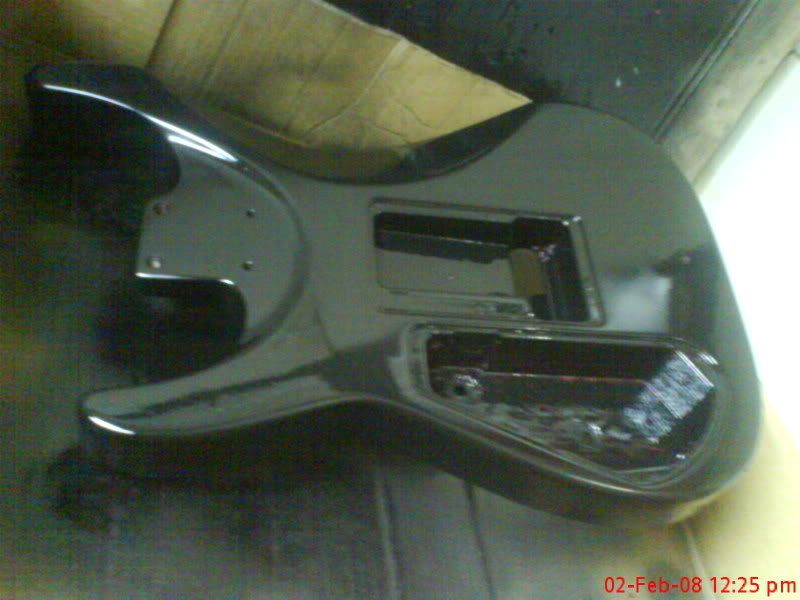

after:natuwa naman ako sa resulta this took two weeks bago natapos


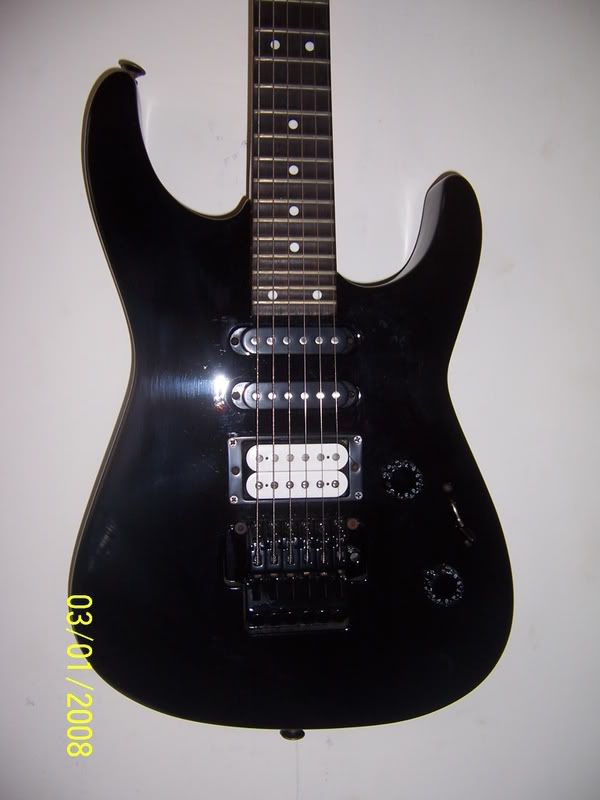
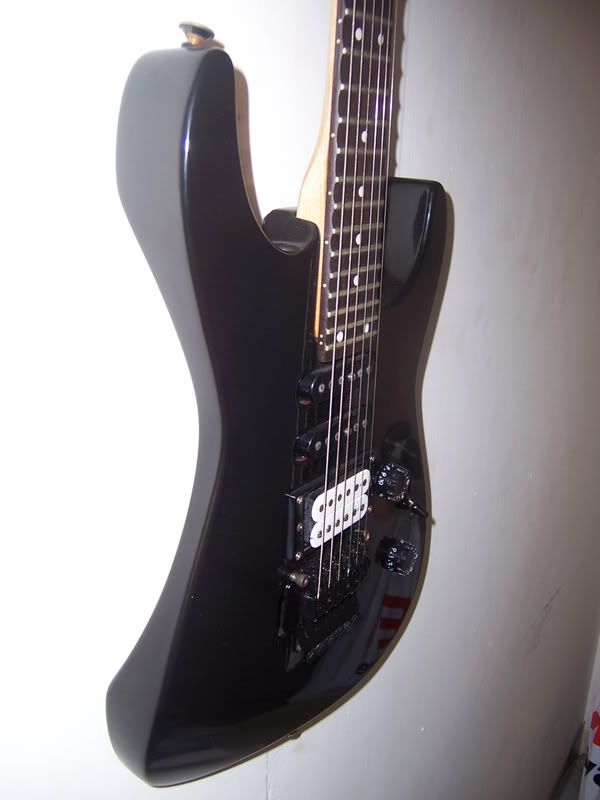
Last edited by stabwounds; 07-21-2008 at 02:56 AM.
-
02-09-2008, 02:35 AM #4Junior Member

- Join Date
- Jul 2007
- Posts
- 54
 Re: "PROJECT GUITAR"
Re: "PROJECT GUITAR"
lol.. how could a 6-string turn into a bass guitar? hehe anyways, gud work bro! \m/
-
02-09-2008, 02:44 AM #5
 Re: "PROJECT GUITAR"
yeah thats what im thinkin unsaon kaha sa
Re: "PROJECT GUITAR"
yeah thats what im thinkin unsaon kaha sa Originally Posted by celpon
Originally Posted by celpon
 luhod lagi ko kung mahimong bass
luhod lagi ko kung mahimong bass 
-
02-09-2008, 02:06 PM #6
 Re: "PROJECT GUITAR"
Re: "PROJECT GUITAR"
abe!kitak o nimo lain forum.hehe... pa paint job ni sir junks. sa backyard.ok kaayo.hehe.pero ok naman sad ni imo guitar bay.
-
02-09-2008, 02:14 PM #7
 Re: "PROJECT GUITAR"
Re: "PROJECT GUITAR"
maayo jud pagka repaint bay stabs, sinaw kau. hehe.
naa lang ko ask. giunsa nimu pag pabilin anang jackson na name sa head? hehe
-
02-09-2008, 03:19 PM #8
 Re: "PROJECT GUITAR"
Re: "PROJECT GUITAR"
@jackyboy naay machine mu kulit design i agi lang sa computer ako mismo gi copy ang decal sa jackson or pwede sad ebay search lang headstock decals

@benweasel thanks johnny kasuway na ka pa repaint didto?
-
02-09-2008, 03:32 PM #9Junior Member

- Join Date
- Jan 2008
- Posts
- 137
 Re: "PROJECT GUITAR"
Re: "PROJECT GUITAR"
try this bro
http://www.till.com/articles/GuitarPreamp/
-
02-09-2008, 03:33 PM #10
 Re: "PROJECT GUITAR"
Re: "PROJECT GUITAR"
mao ba? karn pa ko ana da. ky kato nag paint ko sa ako gitara na rj sauna ang name sa brand sa gitara na sapawan. hehe.
Advertisement
Similar Threads |
|






 Reply With Quote
Reply With Quote
